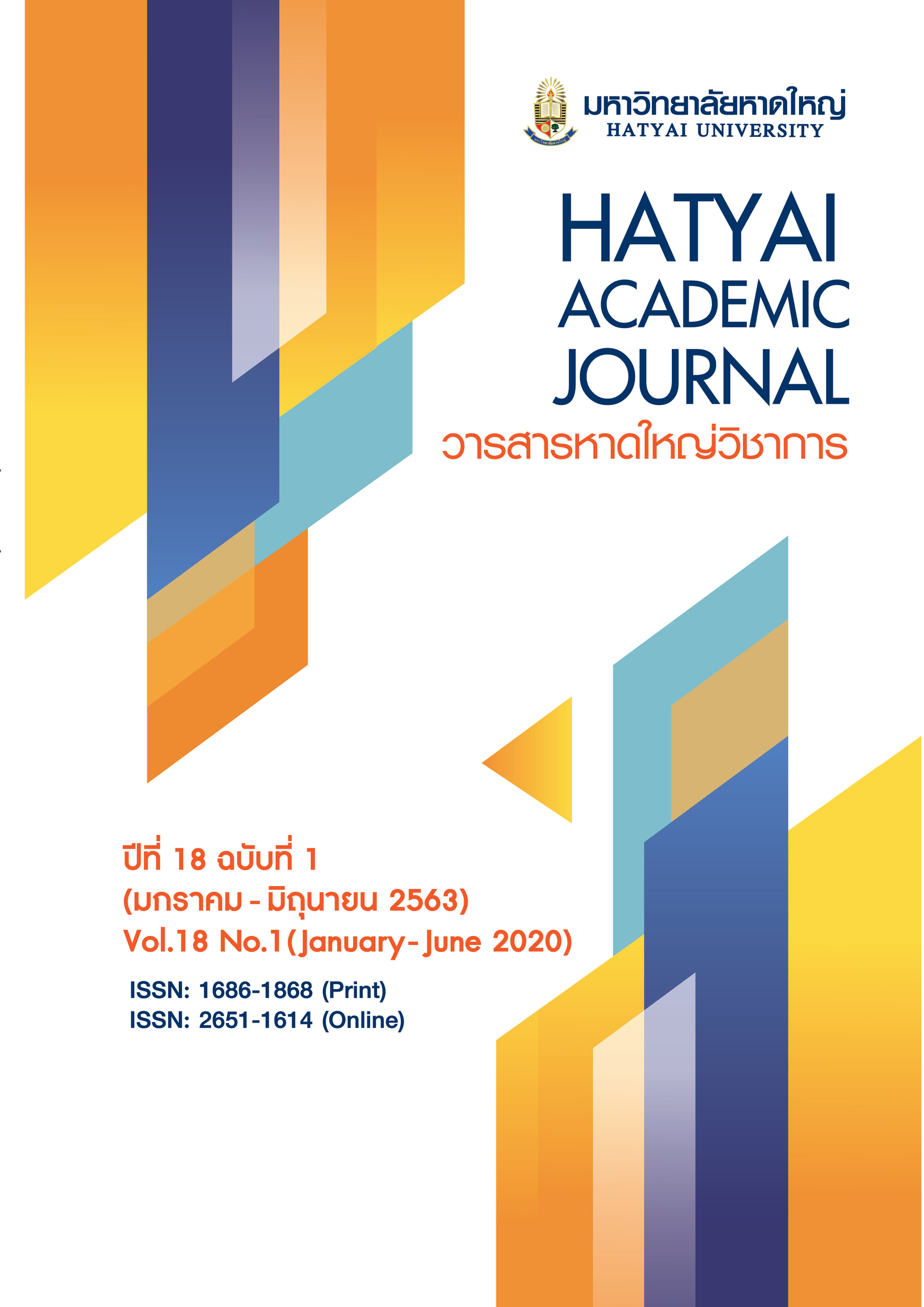Factors Affecting Desirable Characteristics of an ASEAN Citizen: A Case Study of Mathayomsuksa Three Students in the Lower Northern Region of Thailand
Main Article Content
Abstract
The purposes of this research were: 1) to study the factors affecting desirable characteristics of an ASEAN citizen of Mathayomsuksa three (M.3) students in the lower northern region of Thailand and 2) to test the invariant model of the factors.
Four-hundred and thirty-six (436) participants include Mathayomsuksa three (M.3) students whose schools participated in an ASEAN Development program and those whose schools did not. Data were collected through the use of questionnaires assessing desirable characteristics of an ASEAN citizen, information accessibility, inquiry characteristics, and self-immunity. Data were analyzed with path analysis and multiple group analysis. The result showed that had a direct effect on the desirable characteristics of an ASEAN citizen. A model form was invariant between the two groups of students. Path coefficients of information to desirable characteristics of an ASEAN citizen and information accessibility to self-immunity were different. Moreover, the latent mean of self-immunity was also different between the two groups.
Article Details
All published articles are evaluated by three qualified peer reviewers from various institutions through a double-blind process, where reviewers do not know the authors’ identities and authors do not know the reviewers’ identities. The content and articles in the Hatyai Academic Journal reflect the authors’ views only and are neither the opinions of the editorial board nor the responsibility of Hatyai University. The Editorial Board of the Hatyai Academic Journal allows articles to be reproduced for academic purposes, on the condition that the original source is clearly cited.
References
Bandura, A. (1977). Self-efficacy: Toward a unifying theory of behavioral change. Psychological Review, 84(2), 191-215.
Bhanthumnavin, D., & Vaninthanon, N. (2008). The development of multidimensional mental measurement tools for self-immunity (Research report). Bangkok: National Research Council of Thailand. [in Thai]
Bloom, B.S., Hastings, J.T., Madaus, G.F., & Baldwin, T.S. (1971). Handbook on formative and summative evaluation of student learning. New York: McGraw-Hill Book.
Bollen, K. A. (1989). Structural equations with latent variables. New York: Wiley.
Chadthong, K., ChooChom, O., Pakbongkoch, C., & Phukong, S. (2011). Psychosocial factors related to nutritional having food behavior among secondary school students in Chumphon municipality, Chumphon province. Journal of Behavioral Science for Development, 3(1), 172-184. [in Thai]
Department of Non-Formal Education. (1999). A guide to organizing educational and non-formal education activities to promote morality and ethics. Bangkok: Department of Non-Formal Education. [in Thai]
Hu, L. T., & Bentler, P. M. (1999). Cutoff criteria for fit indices in covariance structure analysis: Conventional criteria versus new alternatives. Structural Equation Modeling, 6, 1-55.
Isarangkun Na Ayuthaya, C. (2008). “Foreword” in the teachings of the King, speech and royal speech about the sufficiency economy. Bangkok: Phra Dabos Foundation. [in Thai]
Kimterng, W. (2010). The effect of problem – based learning instruction activities on problem solving skills, mathematical connection skills and inquiry learning of Mathayomsuksa III students (Master’s thesis). Srinakharinwirot University, Bangkok. [in Thai]
Kline, R. B. (2011). Principles and practice of structural equation modeling (3rd ed). New York: Guilford.
Ministry of Education. (2005). Evaluation of desirable characteristics according to basic education curriculum 2001. Bangkok: Ministry of Education. [in Thai]
National Board of Education. (1999). National education act 1999 amendment (version 2) B.E. 2545. Bangkok: National Board of Education. [in Thai]
Office of the Basic Education Commission. (2011). Guidelines for learning management to the ASEAN community Secondary level. Bangkok: Ministry of Education. [in Thai]
Office of the Basic Education Commission. (2015). Key student competencies and desirable characteristics. Retrieved from http://www.chusak.net/articles/41926379/ [in Thai]
Phanmanee, A. (2002). From teaching to sparking enthusiasm. Academic Journal, 26 (1), 15-16. [in Thai]
Phaphol, W. (2008). An analysis of structural relationship of factors influencing on inquiry of Mathayomsuksa III students (Master’s thesis). Srinakharinwirot University, Bangkok. [in Thai]
Phibunsarawut, P. (2011). Royal treasury and the philosophy of sufficiency economy. Bangkok: Beautiful print. [in Thai]
Sanamkate, N. (2007). Internal and external immunity as correlates of appropriate peer-group behavior in senior high school students (Master’s thesis). National Research Council of Thailand, Bangkok. [in Thai]
Santiwong, T. (1996). A study of understanding, attitude and behavior of general people. Bangkok: Thai Watana Panich. [in Thai]
Sareerasart, W., Vanindananda, N., & Suppareakchaisakul, N. (2012). The relationships among social situations and psychological immunity to internet behavior focusing on safety and usefulness of female students in high schools with or without internet safety project. Journal of Behavioral Science for Development, 4(1), 1-13. [in Thai]
The Chaipattana Foundation. (2019). Sufficiency economy. Retrieved from https://www.chaipat.or.th/site_content/item/1309-2010-06-03-09-50-07.html [in Thai]
Theeratith, S. (2014). A strategy in relation to the development of desirable characteristics of Asean Citizens studying in basic education students (Doctoral dissertation). Srinakharinwirot University, Bangkok. [in Thai]
Thongthai, C. (2013). Perception and attitude affecting readiness entry into Asian Economic Community of graduate students at srinakharinwirot university (Master’s thesis). Srinakharinwirot University, Bangkok. [in Thai]
U-thaiwee, P. (2001) Psycho-social Indicators of active learner behavior of teacher-students (Master’s thesis). Khon Kaen University, Khon Kaen. [in Thai]
Wirocnwithayakar, J . (2008). Antecedents and consequential of sufficient behaviors of students in schools with the principle of sufficiency economy project (Master’s thesis). National Research Council of Thailand, Bangkok. [in Thai]
Wongpinpech, V., Wongchant, T., Sakuntanakalap, A., Wasuwat, C., Phanpolakrit, N., & Maneewong, K. (2012). Causal Structural Model of Readiness to ASEAN Citizens of Youth, Muang District, Chiang Mai Province (Research report). Chiang Mai: Payap University. [in Thai]
Yodkaew, P. (2012). Characteristics of ASEAN citizens. Nakhon Pathom: Nakhon Pathom Rajabhat University. [in Thai]

